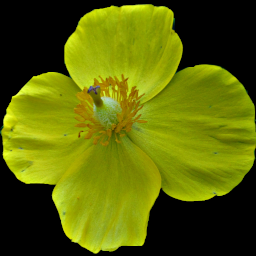
These cheerful flowers love to grow in the poorest soil; this plant grew on an eroded clay bank near Cranberry, where it was blooming in the middle of June. The thick wad of stamens in the middle of the flower is characteristic of St. John’s Worts, most of which also have bright yellow flowers.
Gray describes the genus and the species:
HYPERICUM [Tourn.] L. ST. JOHN’S-WORT
Sepals 5, usually subequal. Petals 5, oblique, convolute in the bud (except in 6). Stamens frequently united or clustered in 3-5 parcels; no interposed glands. Pod 1-celled or 3-5-celled. Seeds usually cylindrical. Herbs or shrubs, with cymose yellow, flesh-colored, or purplish flowers. (An ancient Greek name of obscure meaning.)
H. perforatum L. (COMMONS.) Stem much branched and corymbed, somewhat 2-edged, producing runners from the base; leaves elliptic- or linear-oblong, with pellucid dots; petals deep yellow, black-dotted along the margin, twice the length of the lanceolate acute sepals; flowers numerous, in open leafy cymes. Fields, etc. June-Sept. A pernicious weed, difficult to extirpate; juice very acrid. (Nat. from Eu.)




